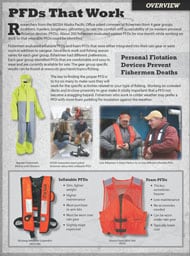Hello, young explorers and water enthusiasts! Today, we dive into the amazing world of Personal Flotation Devices, or PFDs for short. These are super important for anyone who loves to spend time in or around water. Let’s learn together how these devices work to keep us safe and afloat.
Quick Navigation
What Are Personal Flotation Devices (PFDs)?
A PFD is like a special kind of clothing that you wear. It helps you stay above the water if you find yourself in it. We can think of it as a life-saving jacket, or a life jacket, in simple terms. Some people call it a life vest, too. No matter what we call it, its job is the same: to keep us buoyant and safe.
Why Are PFDs Important?
- They keep you afloat: Even if you’re a great swimmer, PFDs are lifesavers.
- They help save energy: You don’t have to work as hard to stay up in the water.
- They are visible: Bright colors make them easy to see in the water.
- They are lifesavers: Even in tough situations, PFDs can help rescue you.
Common Types of PFDs
| Type of PFD | Use |
|---|---|
| Offshore Life Jacket | Great for open, rough, or remote waters where rescue may be slow. |
| Near-Shore Buoyant Vest | Good for calm waters and fast rescues. |
| Flotation Aid | Perfect for boating or fishing as they’re more comfotable to move around in. |
| Throwable Device | These are not worn but tossed to someone in trouble. |
| Special Use Devices | Designed for specific activities like kayaking or waterskiing. |

Credit: www.cdc.gov
How Do PFDs Work?
PFDs work by using buoyancy, which is a fancy word for letting things float in water. The secret is in the materials they’re made of. Let’s take a look:
- Foam: This squishy stuff traps air, making the PFD lightweight and floaty.
- Inflatable designs: Some PFDs have parts that can be filled with air, holding you up in the water.
- Hybrids: A bit of both! They have foam and can be inflated for extra buoyancy.
When you wear a PFD, the buoyant material inside the PFD pushes against the water. This keeps your head and shoulders above the water. Cool, right?
Choosing the Right PFD for You
Finding the perfect PFD is super important. It should fit you just right. A PFD that’s too big can slip off. If it’s too small, it won’t keep you afloat well. Always pick the right size and test it in shallow water first.
Quick Safety Tips When Using PFDs
- Always wear your PFD when you’re on a boat or near water.
- Make sure it’s the right size and fits you snugly.
- Check for any rips or damage before you use it.
- Use the right type of PFD for your water activity.
- Practice using it so you feel comfortable and safe.
Credit: www.greenwichct.gov
Caring for Your PFD
To make sure your PFD stays in tip-top shape, you should take care of it. Rinse it with fresh water after using it in saltwater. Let it dry properly, but not in direct sunlight, as that can weaken the material. And store it in a cool, dry place away from chemicals and sharp objects.
Fun Facts About PFDs
- PFDs are not just for humans — there are ones made for dogs and cats too!
- The Titanic had not enough PFDs for everyone on board.
- Some PFDs come with whistles and lights for extra safety.
- World record holders have used PFDs to float for days in the water.
Frequently Asked Questions Of How Personal Flotation Devices Work
What Is A Personal Flotation Device?
A Personal Flotation Device, often called a PFD, is a life-saving apparatus worn to keep an individual afloat in water. PFDs are designed to be buoyant, helping to maintain a person’s head above water and significantly reduce the risk of drowning.
How Do Pfds Assist In Buoyancy?
PFDs assist in buoyancy by using materials that are less dense than water, such as foam or inflatable chambers, which provide upward thrust and keep the user at the water’s surface.
Are All Pfds The Same?
No, PFDs vary in design and buoyancy offered, categorized into different types ranging from off-shore life jackets, near-shore vests, to throwable devices, depending on use and water conditions.
What Materials Are Pfds Made Of?
PFDs are commonly made of foam, neoprene, or nylon shells with buoyant materials, and some include CO2 cartridges for automatic inflation.


